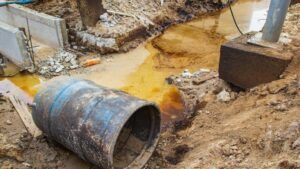Regional Screening Levels (RSL) refers to risk-based concentrations developed by the United States Environmental Protection Agency using standardized equations which integrate exposure information assumptions with EPA’s toxicity data. RSLs aim to protect human health by assessing the risk the contaminants and other stressors pose on humans and ecological receptors. RSL tables are generic, implying that calculations were done without integrating site-specific information. However, modifications can be made in light of site-specific information to suit the particular goals for the specific site.
RSLs allow for risk assessment to evaluate whether a site-specific assessment is necessary or if further investigations are needed for cleanup on a particular site. RSL is used to identify sites, contaminants, and conditions that require further attention. EPA conducts regular reviews and updates on RSL, considering exposure pathways, risk drivers and individual chemical toxicities. Screening levels are provided for different contaminants concerning resident soil, composite worker soil, resident air, composite worker air, resident tapwater, resident soil to groundwater, and composite tables.
A hazard quotient represents the ratio of potential exposure to a contaminant and the level at which no adverse effects are likely to occur. Target hazard quotients (THQ) of 1.0 are applied when screening is being done for a single contaminant. On the other hand, the target hazard quotients (THQ) of 0.1 are applied when screening for more than one contaminant. THQ of 0.1 is suitable when screening multiple contaminants since it is possible for the total hazard index to exceed 1.0 when each contaminant is screened using a THQ of 1.0. For instance, if ten contaminants were to pass by a narrow margin a screening using THQ of 1.0, then the total hazard index could actually be 10. The THQ of 0.1 is therefore suitable in such circumstances.
Regional Screening Levels (RSL) EPA RSL 1.0 and EPA RSL 0.1 can be found on the ESdat website. All compiled environmental guidelines and standards are shown. These are pre-loaded into ESdat Online.

ESdat is a single repository for storing, analyzing and reporting your environmental investigation and monitoring data. ESdat validates and imports data from laboratories, data loggers, field apps and spreadsheets. Users can filter and view data using the built-in graphing, mapping, tabulation, statistical and report generation tools. Increasing efficiency and confidence in the data are cited as key benefits by organizations using ESdat.
ESdat Online delivers a highly cost-effective and efficient approach to store your ongoing monitoring environmental data, optionally with a historical data upload provided as a getting started service. ESdat Online is perfect if you want a cloud-based system that collates and reports your ongoing laboratory and field results.
ESdat Server provides the advantages of ESdat Online with the option of adding ESdat Desktop for data experts to upload their historical data, effectively interrogate the raw data being used within the database, and automatically launch and send data to other Desktop Applications such as Surfer, ArcGIS and Excel.
A variety of complementary products are also available to help with related work, such as sample planning and electronic Chain of Custody (LSPECS), offline field data collection or bore logging (pLog), and production of bore logs (ESlog), public portals and customized reporting.
References
EPA (2021). Regional Screening Levels (RSLs) – Generic Tables. Retrieved from https://www.epa.gov/risk/regional-screening-levels-rsls-generic-tables
EPA (2021). Regional Screening Levels Frequent Questions. Retrieved from https://www.epa.gov/risk/regional-screening-levels-frequent-questions
Summary
Regional Screening Levels (RSL) refers to risk-based concentrations developed by the United States Environmental Protection Agency using standardized equations which integrate exposure information assumptions with EPA’s toxicity data. RSLs aim to protect human health by assessing the risk the contaminants and other stressors pose on humans and ecological receptors. RSL tables are generic, implying that calculations were done without integrating site-specific information.






